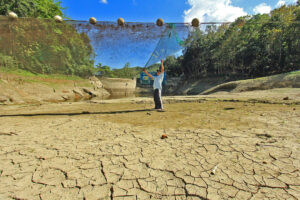THE Land Bank of the Philippines (LANDBANK) said on Wednesday that it is allocating P5.8 billion to support climate resilience projects in agriculture.
“LANDBANK supports investment in innovative technology that will help address climate change risks in the agriculture sector. This modernization is aimed towards improving the production and income of our local farmers while ensuring national food security amid the changing global climate,” LANDBANK President and Chief Executive Cecilia C. Borromeo said.
The state-run bank intends to finance farming technology, systems, facilities and equipment that will help farms and fisheries become more adaptive and resilient to the effects of climate change, such as severe storms and prolonged drought.
“The program can finance crop, livestock, and fishery projects that utilize climate-resilient technologies, such as the adoption of planting materials and seedling techniques for climate-resistant food crops, pipe irrigation that helps prevent water loss during dry season, and climate-adaptive farming systems such as terracing,” LANDBANK said.
“Modern facilities and equipment that minimize harvest and post-harvest losses during typhoons can also be financed under the program, including rice harvesters, dryers and outdoor grain storage facilities,” it added.
The bank said it can provide credit for working capital and the construction of facilities such as greenhouses, reservoirs, rainwater collecting systems, and farm-to-market roads with drainage, and other new and emerging technologies approved and endorsed by the Department of Agriculture.
Cooperatives, associations, and private borrowers categorized as single proprietorships, partnerships, or corporations may borrow up to 80% of the total project cost.
Local government units may borrow not more than their net borrowing capacity as certified by the Bureau of Local Government Finance.
“Term loans for working capital and permanent working capital are payable up to one year and three years, respectively, while loans for fixed assets and construction of facilities are payable based on cash flow but not more than its economic useful life. Interest rates shall be based on the prevailing market rate,” it added. — Luisa Maria Jacinta C. Jocson
